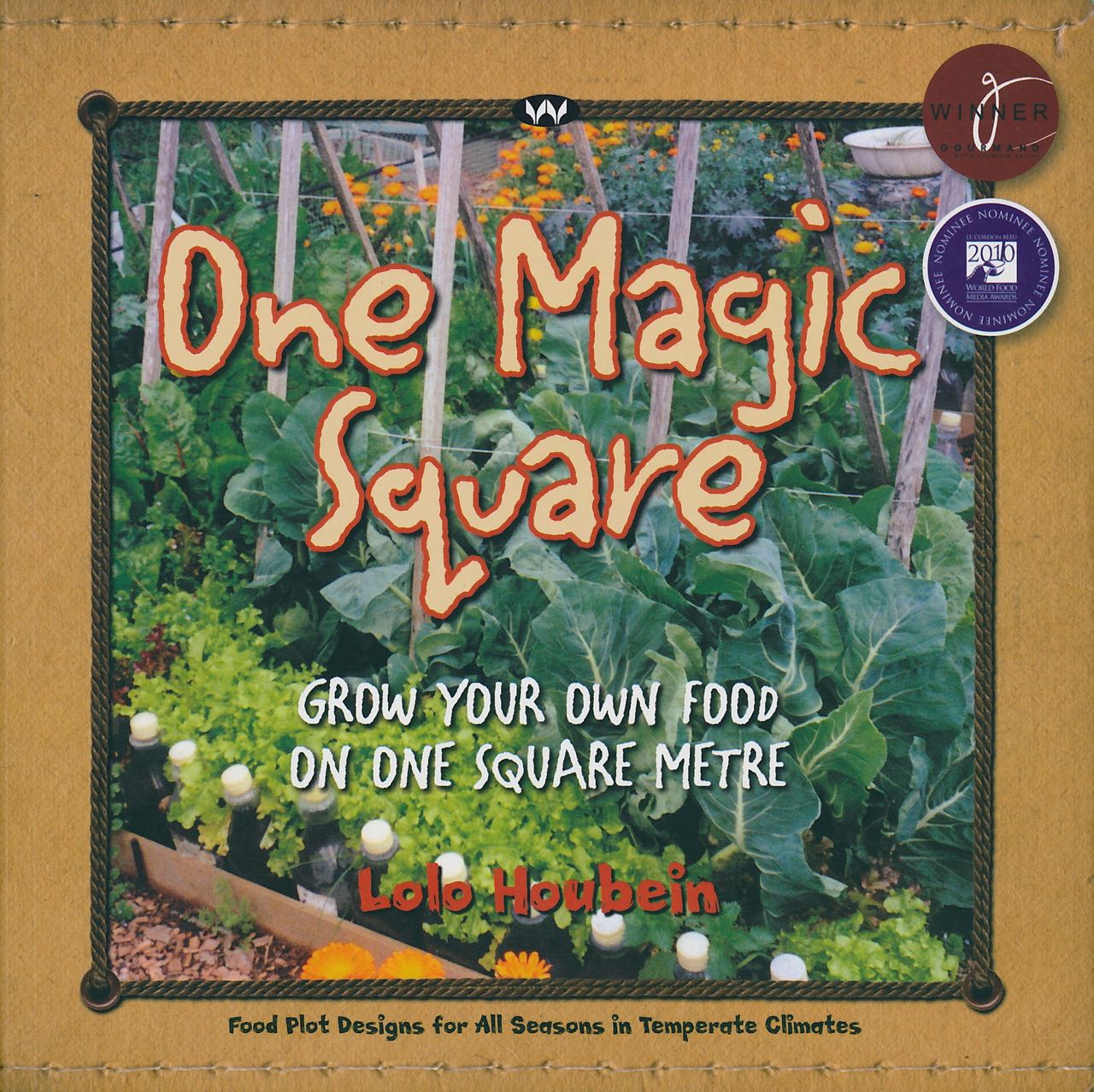Book 7/24: One Magic Square
I’ve had this book, One Magic Square: Grow your own food on one square metre by Lolo Houbein, on my bookshelf for several years. I bought it because the concept of being able to grow food by starting small, in a one metre by one metre square, appealed to me. I’m a victim of the big-thinking-but-not-acting-because-it’s-all-too-overwhelming mindset (not just in gardening, although my lack of a food garden is one of my more notable achievements in this sphere).

I’ve had vegetable patches in the past, and in the years BK (Before Kramstable) I’d spend hours working in the garden. I had visions in those years that if I was to ever have a child, she (whom I’d named Angelica Rose) and I would carry on my passion, spending hours together growing our own food, talking and having a wonderful time.
However, in one of life’s great lessons, the reality of actual parenthood is rarely like the parenthood you imagined. Kramstable (as well as not being a girl called Angelica Rose – thankfully for him and me; I would never choose that name now!) hasn’t really showed much interest in my garden, so the dream never came to fruition. (We never did any of those crafty activities that all the parenting books and blogs led me to believe I’d be partaking in either, and Kramstable’s interest in his cars and train set was conspicuous in its absence. So it’s true. Your kid will never be the kid in the “250 Activities Your Toddler Will Love and You Can Do Without Spending a Cent” books, and that’s perfectly fine. He’s who he is, not a model child from a book.)
Back to the book.
I’d skimmed through it a couple of times and vaguely thought that the idea of a square metre plot seemed doable, even though my weekend free time was limited. But it never eventuated, and the book has sat on the Shelf Of Good Intentions since then.
After I read Barbara Kingsolver’s book, I knew I couldn’t ignore the need to get growing any longer. But where to start? Last year I started by throwing some old pea seeds into a pot, which took off pretty well only to be felled by a couple of hot days just as they’d started podding. I realised I already had the basic infrastructure in place: four raised garden beds that I’d dug into the hill a couple of years ago, with the view of a putting in place a rotating system supplemented by letting the chooks scratch up each one for three months, followed by three months rest.
Actually I think the plan was to have five beds, so one for each season and one resting. The other one is still unconstructed in the shed and I don’t have the energy to dig another square metre into the hill right now!
The book has four parts. The first part is what appealed to me most: 60 pages of magic square metre plots, from which you can choose one, suitable for the season, to start straight away. These include salad plots, stir-fry plots, pizza/pasta plots and soup plots, which contain complementary mixes of vegetables. There is also a mono-crop option, where you fill the square with one crop and once each is done, put in another seasonally-appropriate crop.
To get started, Ms Houbein suggests you go out to the garden, dig over a square metre and choose your first plot. Then go to the nursery, get the seeds or seedlings, a bag of blood and bone and a bag of soil to top up the bed.come home, prepare the bed, plant the seeds or seedlings according to the plan and water them in.
Apart from the actual digging over of the bed, it will only take you a few moments to become a food gardener.
While you’re waiting for your plants to grow, you can read the rest of the book to learn more about food gardening, how to grow the plants you’re interested in, and why growing your own food is so important.
Part two provides an overview promoting similar ideas that Ms Kingsolver wrote about: the industrialisation and globalisation of food, and the enormous havoc this plays on both our planet and our health.
“There is no cheap food,” writes Ms Houbein. “Consider the real cost of a cucumber in a plastic jacket, grown in a temperature-controlled poly tunnel, refrigerated, put in the jacket, transported a great distance, and displayed in an air-conditioned supermarket under burning lights. The cucumber you grew yourself has to be fresher, tastier and healthier than that.”
Indeed it does! And the third part of book tells you how to do that. It’s made up of about 20 short sections covering things you need to know about in your garden like watering, compost, mulch, weeds, saving seed and pruning. It’s all useful information when you need it rather than as a read through once like I did.
The final part of the book provides more detail on how to grow specific food plants.
Overall I found it a very thought-provoking and interesting book, though I did struggle with reading it through as a whole. Having said that, it’s not really the sort of book you’re supposed to read through once and forget about. You’re supposed to get out there and plant stuff!
And that’s the next step I have to take. Beds 1 and 2 are ready for their winter plantings. Today’s excuse is that it’s raining . . .
That sounds like a really smart approach! If only the rain would stop. . .